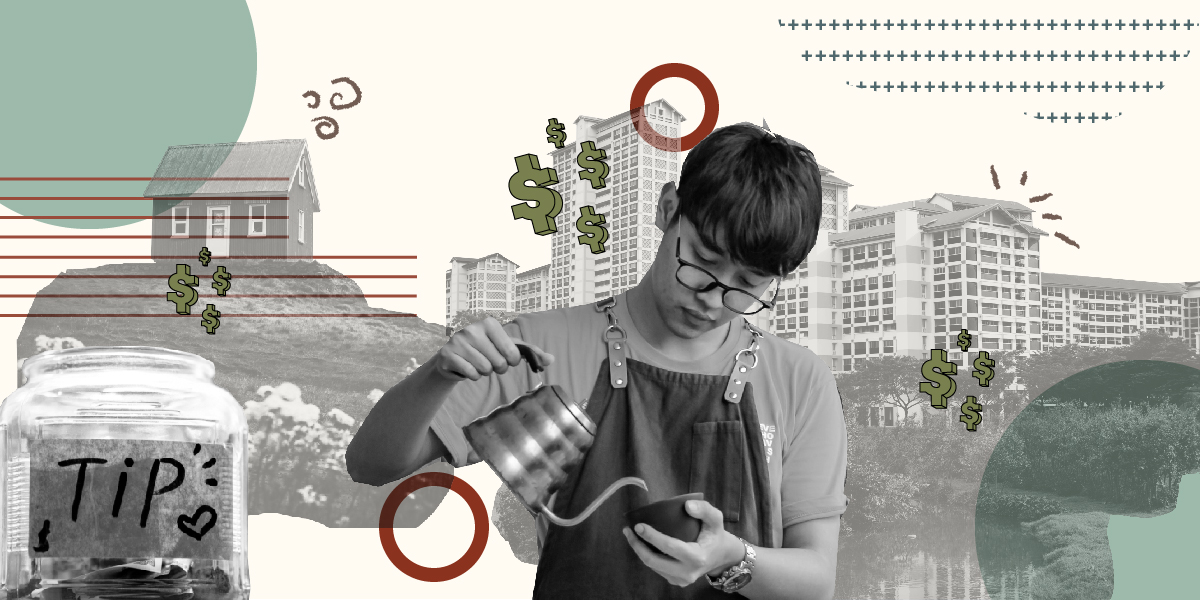When Franklin Delano Roosevelt fought to establish the minimum wage in the 1930s, he intended it to be a living wage. In his 1933 speech on the National Industrial Recovery Act, he said, “No business which depends for existence on paying less than living wages to its workers has any right to continue in this country… and by living wages, I mean more than a bare subsistence level—I mean the wages of decent living.”
His words became the basis for establishing the first federal minimum wage, codified into law through the 1938 Fair Labor Standards Act. The wage was meant to represent the minimum amount of money a worker should be paid and still live comfortably. At the time, “minimum wage” and “living wage” were the same.
Over the past few years, the US national discourse around a living wage has picked up significantly, primarily because the definitions of “minimum wage” and “living wage” have diverged.
The federal minimum wage hasn’t changed since 2009, which has real ramifications for the millions of people who are paid at or above the minimum wage. In recent years, proponents of a living wage have asked for increases to the national minimum to meet current living standards and lift almost 1 million minimum wage workers out of poverty; opponents say this would lead to 1.4 million people put out of work.
Coffee shops employ hourly employees, many of whom would be affected by changes to the federal minimum wage. Although the minimum wage determines many coffee job wages, some owners are stepping beyond, breaking long-held ideas about waged and tipped work, to determine the value of their employees’ work.
A Living Wage, Briefly
Today, the minimum wage and a living wage are seen as two very different things. The federal minimum wage is $7.25 an hour, while the suggested living wage of $15 an hour is already quickly becoming outdated as inflation continues to hammer workers in all industries. The living wage is a dynamic metric meant to reflect what a person needs to live, while the minimum wage is a federally-determined standard that has seen no movement in the last 13 years.
The living wage varies depending on where you live and your household demographics: in San Francisco, a single person with one child would need to make $60.43 an hour to constitute a living wage. In contrast, a single person with no kids can get by on $14.53 an hour in Knoxville.
The MIT Living Wage Calculator tabulates a living wage based on a market calculation of costs in specific geographic areas. It looks at a family’s minimum possible prices for food, childcare, health insurance, housing, transportation, and other basic needs and adjusts based on the size of the family.
Notably, MIT’s living wage budget does not include room for funds that cover entertainment, eating out, holidays, or saving money. It effectively only calculates subsistence level wages, as they explain on their page. Their living wage calculations are just enough to keep employees from seeking public assistance or suffering housing and food insecurity. It would not make a person wealthy and would not enable them to take vacations or even buy luxury items. MIT’s calculator both renews FDR’s concept of the living wage as the minimum wage and shows us how far behind we are.
Just the disparity in the minimum and living wage can cause business owners anxiety. However, there are strong arguments for raising pay above the mandated minimum wage—and business owners who have made a meaningful living wage possible for hourly coffee workers.
Above the Minimum Wage
In 2021, New Orleans implemented a Living Wage Ordinance that raises the base wage for city government employees yearly. In 2021, it was $11.19; now, in 2022, the pay is $13.25.
It’s a step up from the federal minimum wage, but Jonathan Riethmaier, the owner of Mammoth Espresso, believes that this is “close to poverty wages for the area.” The MIT Living Wage Calculator agrees: the living wage for a single person in New Orleans is $16.32 an hour.
“A living wage is a moving target, especially right now,” Riethmaier says. With current inflation rates, what seemed like a good wage last year might feel pinched today. At Mammoth, Riethmaier is stepping outside traditional wage frameworks to find solutions for compensating workers fairly.
“If you try to marry conventional business sense with equitable compensation, a lot of people have a hard time getting there,” Riethmaier says. Many coffee shops use the minimum wage as a starting point and form wages for hourly workers—from baristas to roasters to production workers—around that benchmark. But Riethmaier’s goal was different, and having a distinct vision for employee wages required a new approach.
“We look to identify equitable positive outcomes for our staff—then we reverse engineer that. We looked at the vision for the operation, and after that, we thought, ‘How do you pay for this?’” Wage calculations at Mammoth can get tricky: Reithmaier is always looking at the team’s functional hourly wage, which requires calculating average hourly tips.
Base hourly wages for Mammoth range from $14-$18 an hour, excluding tips. Periodically, Riethmaier assesses electronic tip records to determine the functional hourly wage, which at last assessment ranged from $20-$23 per hour.
The Price of Tips
Historically, the pay rate for tipped employees has been lower than the federal minimum wage—the idea being that tipped employees would make at least the federal minimum once tips are added. For instance, in Missouri, employers can pay tipped employees half the state’s minimum wage, which comes out to $5.57 an hour, as long as they receive enough in tips to ensure they’re taking home the state’s minimum wage of $11.15 an hour.
Tipping, however, is rooted in slavery, and this history lives on in the way that tipped employees rely on the generosity of the people they serve. Tipped employees risk wage instability without “good customers” who tip well.
Michael Shroeder, co-owner of Oddly Correct Coffee in Kansas City, was aware of these issues and looked for ways to change tipping for their employees while not pricing any guests out of enjoying their coffee. Shroeder sees the key struggle for business owners as “really high expectations on what coffee service should be, partnered with really low expectations from consumers on what the value of that is.”
Shroeder and the team at Oddly wanted to raise wages and offer benefits for its workers but knew they’d had to raise prices to do so. When the time came to implement the new drink prices, Shroeder said they “made sure [customers] knew this was important to us” by explaining why changes were happening directly. At Oddly, each employee is paid a minimum of $18 an hour, including tips, above MIT’s living wage estimate. Shroeder’s team is so committed to this that if an employee’s wages don’t come out to $18 an hour with tips, Oddly will contribute more to their paycheck that period to keep wages stable.
Some cafes have begun experimenting with getting rid of tips and raising the prices of drinks, but Reithmaier and Shroeder weren’t sure that’s the way to go just yet. “It’s always on the table, but we’re gaging what Kansas City is ready for and what makes the most sense for our community,” Shroeder said. Reithmaier noted that moving away from tipping is something they’ve considered at Mammoth, but “people like the tips model… you have to listen to the people receiving this pay. Earners don’t want a cap on their earnings potential.”
Why Reconsider Pay Rates?
In North Carolina, Loom Coffee Co. partners closely with cafés that pay their employees a living wage. As explained on their website, they believe that “all workers deserve a living wage, equity and ownership, tangible material benefits and freedom from exploitation.” They walk the talk by paying a living wage to their own employees, encouraging union activity, and providing tangible education materials to others interested in learning more about paying a living wage. Loom co-founder Christopher Pierce believes incentivizing business owners to raise wages is the best way to popularize the living wage. “We’re talking about elevating the entire supply chain,” he pointed out. If wanting the best for employees isn’t enough reason to pay a living wage, then getting owners to think about what it does for the business might work.
“If baristas are paid more, they care more,” Pierce says.
For businesses rethinking compensation, data from the advocacy group One Fair Wage is worth noting: “The restaurant industry includes seven of the ten lowest-paying jobs in the country. In fact, people who work in the industry are twice as likely to need food stamps as the rest of the US workforce, and three times as likely to live in poverty.”
When asked how higher wages have impacted workers at Oddly Correct, Shroeder said, “We’ve seen increased financial independence, and two [employees] have bought homes in the past year.” He reported that more employees “feel valued, involved, and active” in the business.
FDR’s goal for the minimum wage was that anyone working 40 hours a week should be able to make ends meet without government intervention; with rebalancing, business owners can make that true.
Valorie Clark is a writer and historian based in Los Angeles. She often writes about coffee, travel, social history, and the intersection of all three. When she’s not writing, she’s probably bending to her cat’s every whim.















